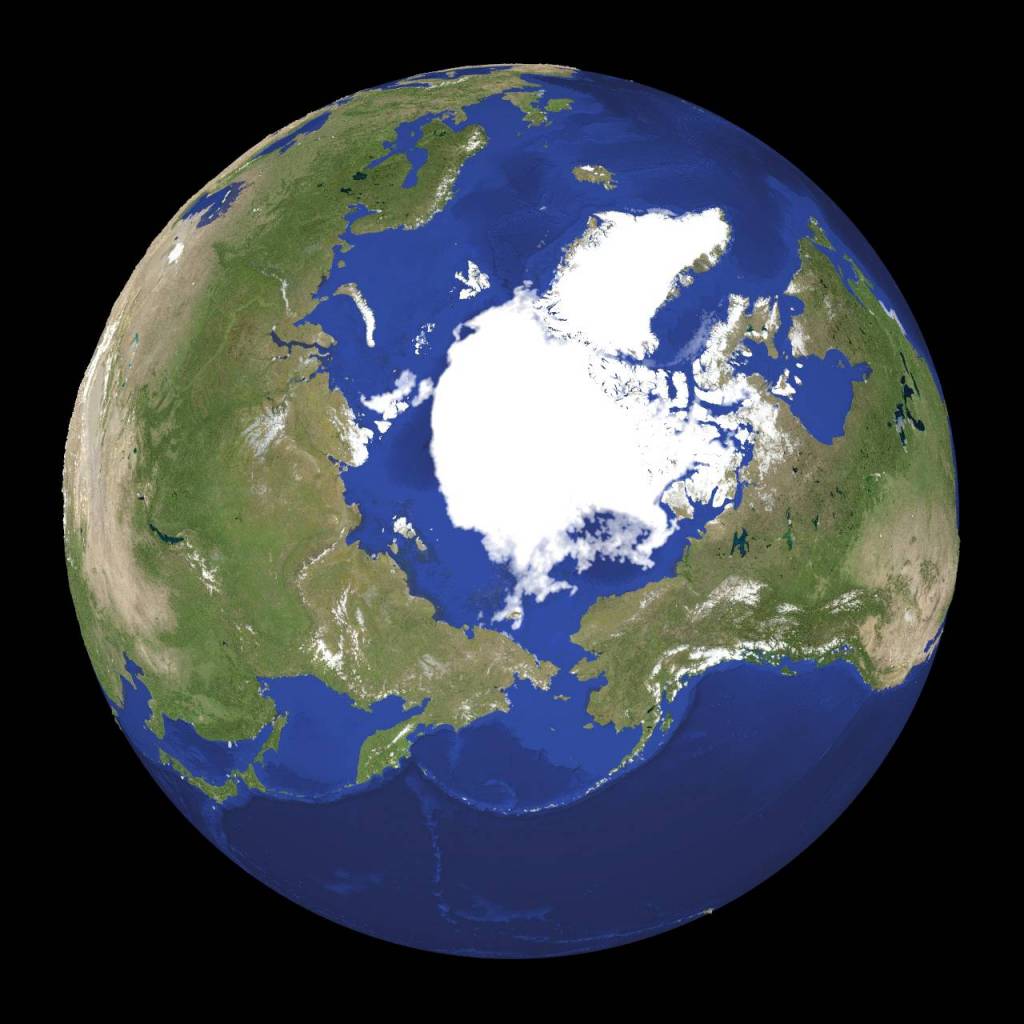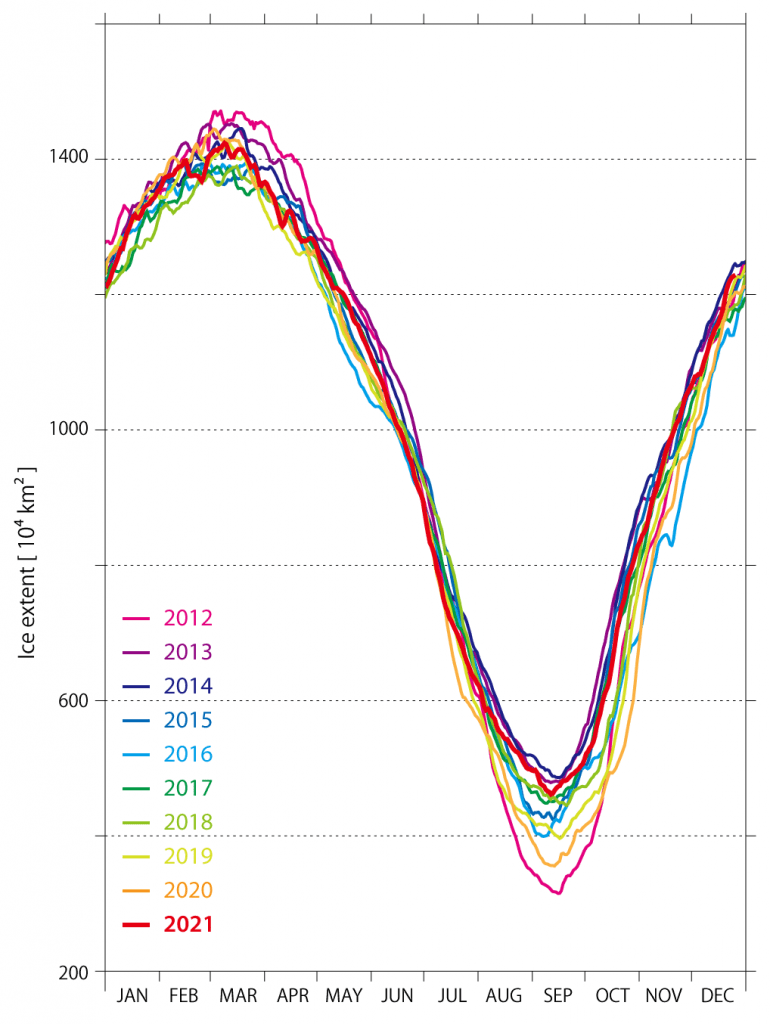News & Press Release
Weathernews Looks Back on Sea Ice in the Arctic Sea in 2021
Both Northeast and Northwest Passages of Northern Sea Route Remain Closed for the First Time in 12 Years
Shipping >Weathernews Inc. Global Ice Center announced its review of Arctic Ocean sea ice conditions during 2021. Due to the cool summer temperatures in July 2021, sea ice did not see much melt and the minimum sea ice area for the year was the largest in the past seven years at 4.61 million km2. Furthermore, both the Northeast (Russian side) and the Northwest (Canadian side) Passages of the Northern Sea Route remained closed. This is the first time in 12 years since 2009 that the Northeast Passage did not open.
For voyages between Asia and Europe, using the NSR reduces not only transportation costs but also CO2 emissions. Weathernews began offering Carbon Intensity Monitoring (CIM) Service, a CO2 emission monitoring service for the shipping industry, in April 2021. We will continue to support the safe navigation of vessels through the Northern Sea Route while also focusing our efforts on supporting the reduction of CO2 emissions.
* Definition of "open": A state in which the entire route can be traversed without entering any areas affected by sea ice, according to satellite data.

Northeast Passage (Left) and the Northwest Passage (Right)
Northern Sea Route Remain Closed for the First Time in 12 Years Due to a Cool Summer
The decline in sea ice area has been accelerating in recent years due to increases in water temperature, with some pointing out the possibility that warming may be progressing in the Arctic region at a rate two to three times faster compared to other regions. During the preceding 2020 season, in particular, the Northern Sea Route were was open for the longest period ever, at 88 days, owing to the record-breaking high temperatures in the Arctic region.
On the other hand, the summer temperatures during 2021 trended colder than usual in July, which is the usual period of melting, resulting in less than average amount of sea ice melting. As a result, sea ice remained in some areas of the Northern Sea Route even in September when the sea ice area should be the smallest, causing both the Northeast and the Northwest Passages to remain closed.
This is the first season in 12 years, since 2009, that the Northeast Passage did not open. For the Northwest Passage, this was the second consecutive year that it failed to open due to sea ice persisting along the Passage. The minimum Arctic Ocean sea ice area for the year was 4.61 million km2, the largest recorded in the past seven years.
Minimum areas of Arctic Ocean sea ice in the summer period
(in ascending order)
Area of Arctic Sea ice extent (yearly minimum value) | ||
1st | 4.61million km2 | (2021) |
2nd | 4.47million km2 | (2017) |
3rd | 4.46million km2 | (2018) |
4th | 4.26million km2 | (2015) |
5th | 4.02million km2 | (2016) |
6th | 3.96million km2 | (2019) |
7th | 3.55million km2 | (2020) |
The numbers are recalculated using the latest methodology, and some years may differ from previously published press releases.
Contributing to Environmental Measures through Visualization of CO2 Emissions and Support of Safe Navigation through Northern Sea Route
In order to achieve greenhouse gas (GHG) reduction targets, the International Maritime Organization (IMO) adopted the carbon intensity indicator (CII) rating scheme in June 2021 as a new regulation applicable to large ocean-going vessels. As a result, the environmental performance of a vessel will be evaluated on the basis of its annual energy efficiency starting in 2023, making fuel-economy improvement measures imperative for ship owners and ship management companies.
Weathernews began offering Carbon Intensity Monitoring (CIM) Service, a CO2 emission monitoring service for the shipping industry, in April 2021. By combining the CIM Service with our traditional OSR (Optimum Ship Routeing) Service for the selection of optimum routes, we support the environmental measures of the shipping industry through digital technologies by realizing, among other things, ecocentric voyages and visualization of the resulting reduction in emissions.
Given the adoption of the new rating scheme, it is believed that the use of the Northern Sea Route, which can reduce CO2 emissions, will continue to increase. Meanwhile, even though Arctic Ocean sea ice is on a declining trend, sea ice remaining along the coast due to seasonal weather conditions, as was the case this year, can pose the risk of accidents. In order to support safe navigation through the Northern Sea Route, Weathernews will continue to conduct detailed observation and analyses of Arctic Ocean sea ice by utilizing proprietary microsatellites and prediction models to provide more accurate information on sea ice.

